#aquatic insects
Text
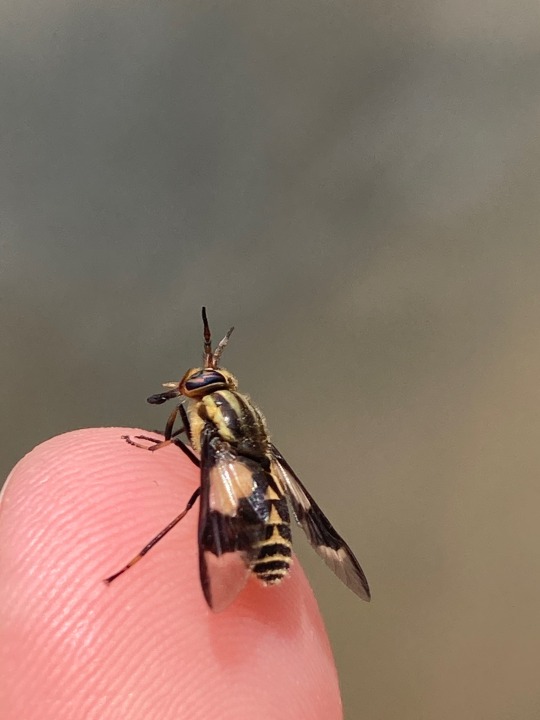
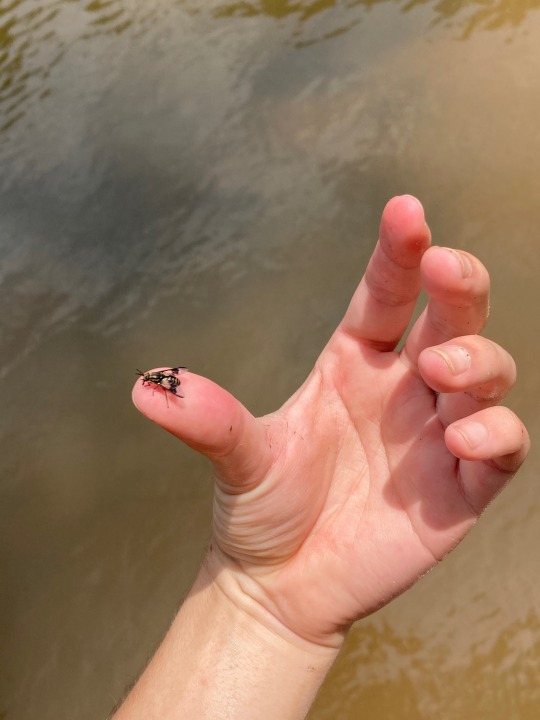
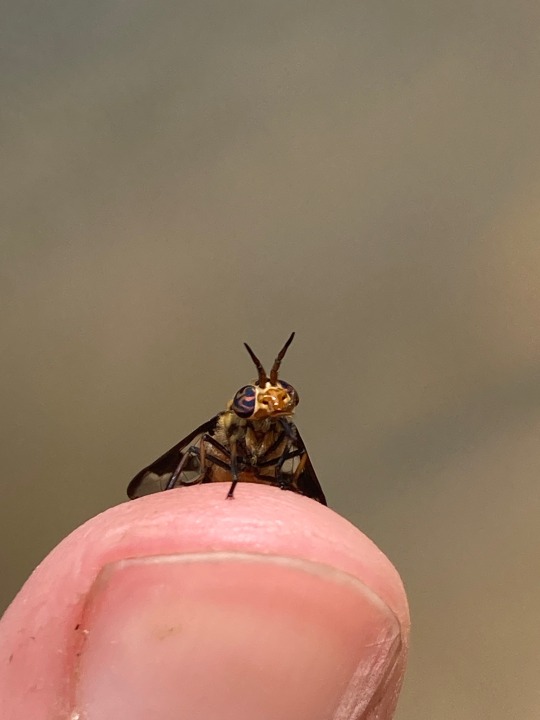
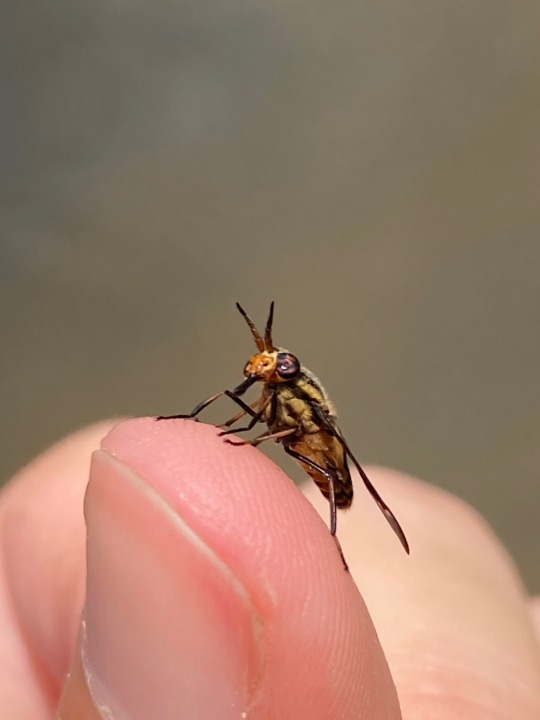


Pretty, right? The deer fly (from the family Tabanidae) is a common wetland species known for its painful bite, but did you know it’s an aquatic insect too? The babies, at least! They’re sensitive to wetland habitat loss, which stunts their life cycle at the baby stages. Do not recommend holding on for as long as I was, this little guy was just stunned. 5/5/24
40 notes
·
View notes
Text

Rhaphigaster nebulosa and Palomena prasina cuddling in the sun. :-)

A mayfly came to visit too.
I raised a few mayflies last year, actually. They just spawned in a little puddle of water in my garten and very soon they became very dear to me. I even watched them fly into the sky.
So a few days ago I put up a tiny swimming pool that's really for cats but my cats only drink out of it so I decided to use it as a place for insects to lay eggs in. There's already dead leaves, a couple rocks, a few sticks with lichen on em and also water algae which I think is good? The mayflies seemed to love the leaves last year.
Does anyone have experience with raising aquatic insects? I'd be thankful for advice.
22 notes
·
View notes
Photo
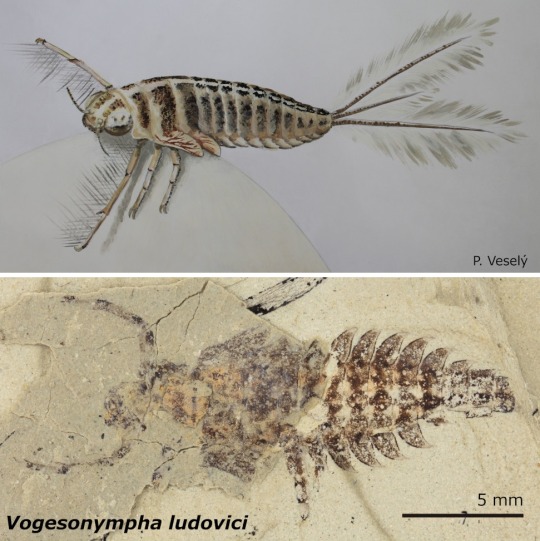
Evolution of filter-feeding in aquatic insects dates back to the Middle Triassic: new evidence from stem-group mayflies (Insecta, Ephemerida) from Grès à Voltzia, Vosges, France
Pavel Sroka, Arnold H. Staniczek
Abstract
In the aquatic insects, mayfly nymphs have developed a remarkable diversity of life strategies and feeding habits. However, the early evolution of these strategies and the role of mayfly nymphs in freshwater palaeoecosystems remain largely unknown.
We investigated fossil mayfly nymphs from the Grès à Voltzia Formation from the Middle Triassic, France, which represents the oldest known outcrop yielding a diverse mayfly fauna. We focused on three species, namely Mesoplectopteron longipes, Vogesonympha ludovici and Triassoephemera punctata, and investigated both original type material and numerous previously unstudied specimens.
As a result, we provide a new interpretation of their morphology, life histories, and systematics: the nymphs of M. longipes, V. ludovici and T. punctata were aquatic and at least the former two species undoubtedly lived in flowing water as passive filter-feeders. This finding represents the so far earliest occurrence of this feeding strategy in aquatic insects. The most obvious morphological adaptations to this lifestyle are long filtering setae arranged in rows on forelegs, analogous to some modern mayfly nymphs.
We place the three investigated species M. longipes, V. ludovici and T. punctata in a newly established, unranked higher taxon, Sinebranchia, representing the sister group to Heptabranchia (Coxoplectoptera + Ephemeroptera). Sinebranchia share a single-segmented tarsus synapomorphic with Heptabranchia, but retain the plesiomorphic condition of double tarsal claws. Sinebranchia are also characterized by their autapomorphic lack of tracheal gills, probably connected to their life in flowing, well-oxygenated water.
Read the paper: https://onlinelibrary.wiley.com/doi/10.1002/spp2.1456
#entomology#insect#insects#fossils#aquatic#prehistoric#aquatic insects#animals#nature#science#evolution
181 notes
·
View notes
Text
You would not believe the discourse surrounding the male genitalia of these three genuses of fingernet caddisflies

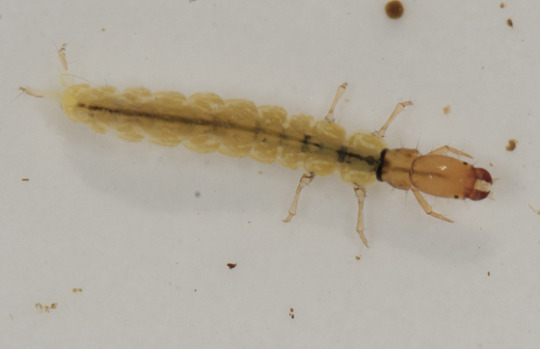

#from the field#i fell down the wormhole (ha) of taxonomy for fingernet caddisflies#i was trying to figure out the differences between each genus#i am not sure if the genitalia discourse is just within the wormaldia genus#or if it's between the 3 genuses or it could be both#i found a scalding article from 1938 that is very angry about some classifications that were made#i could barely understand but you could tell the guy was using big words to hide his anger#entomology#insects#aquatic insects#aquatic invertebrates#if anyone more knowledgeable about entomology wants to take a crack at understanding the article lmk#bugs#bugblr
10 notes
·
View notes
Text
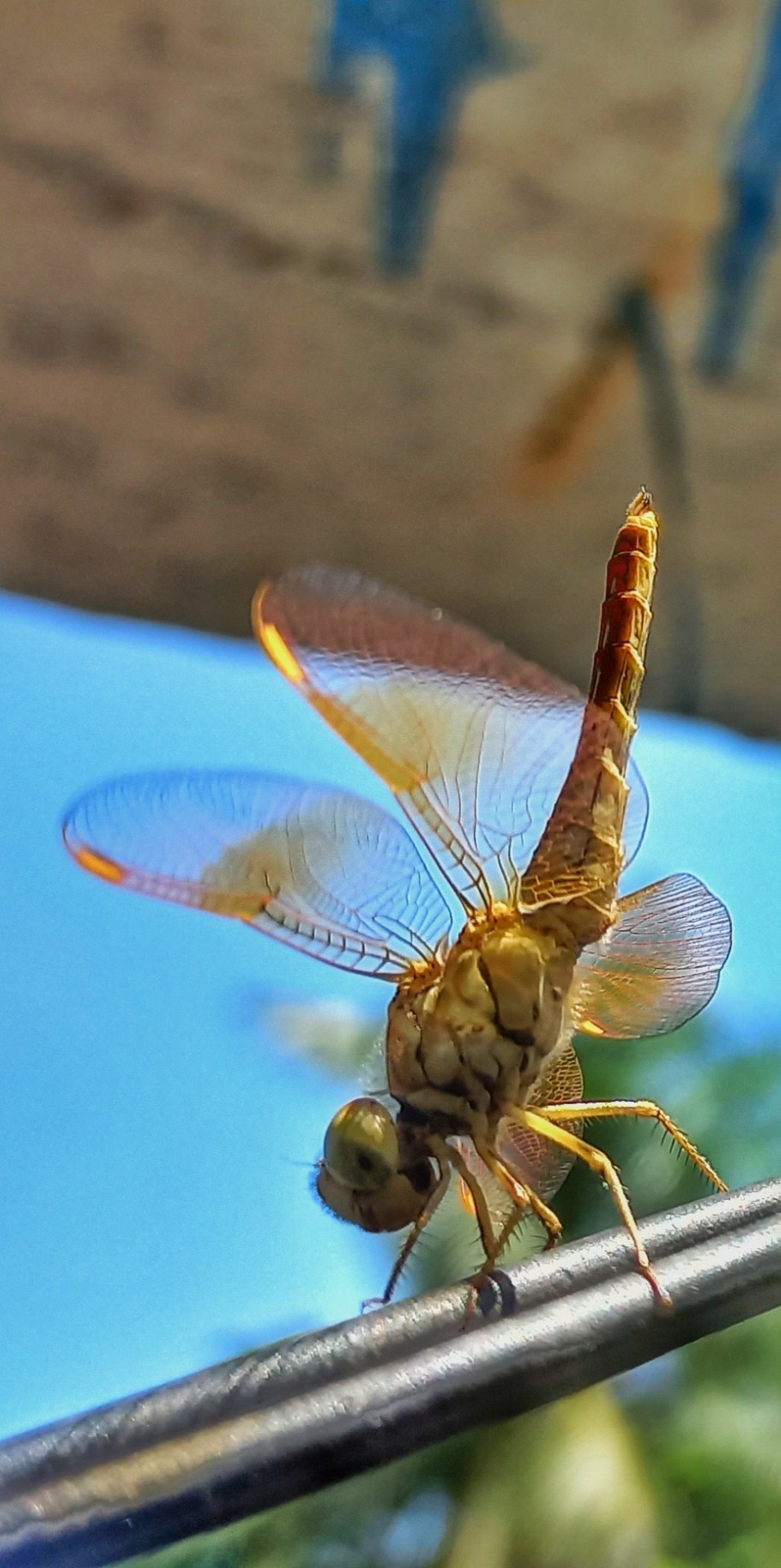
#md wahid#insects#entomology#odonata#Aquatic insects#super wings#predator#colorful#hunting#life#beautiful#memories
1 note
·
View note
Text
Gonna do a bug stream finally! I was able to get ethanol in so I'm gonna pick through some samples so long as my camera cooperates!
Twitch.tv/ecogothchild
0 notes
Text
@alhexy submitted: saw a cute beetle while i was working, he decided to read the nutrition labels on the cans.

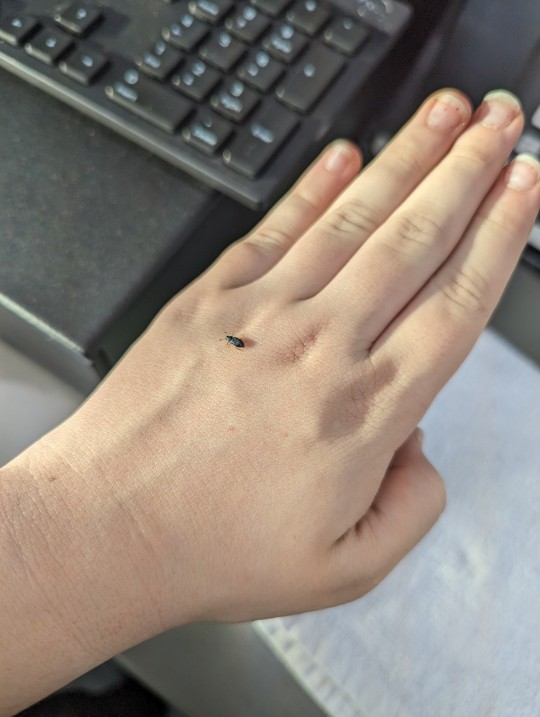
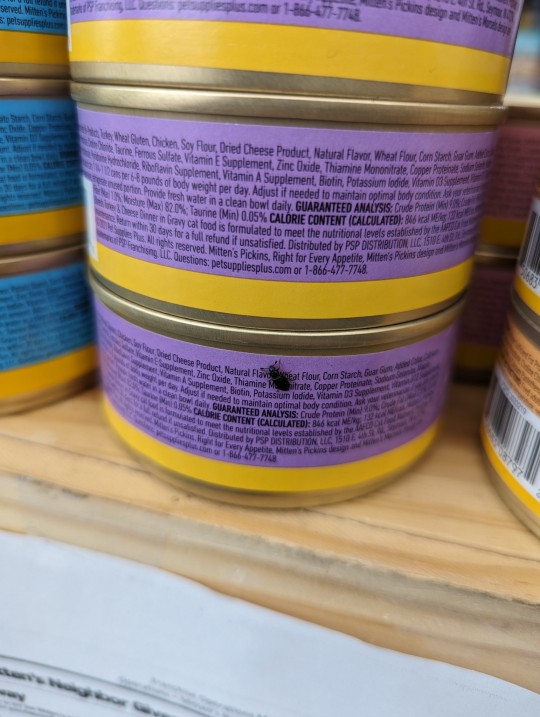
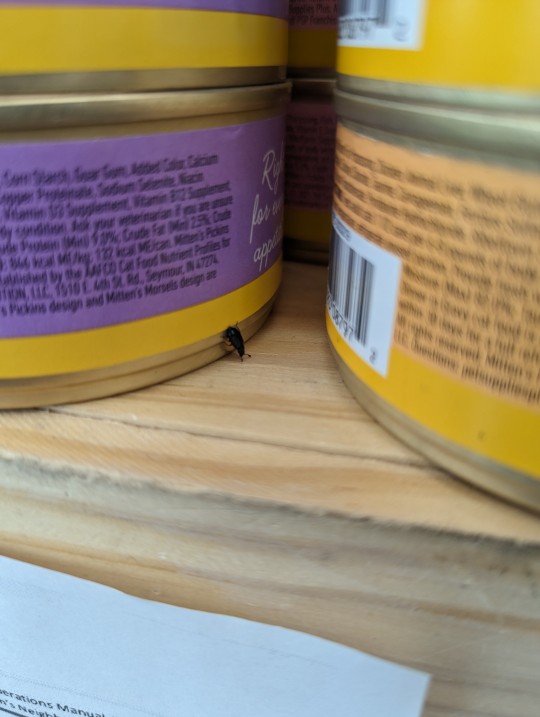
a bladder snail
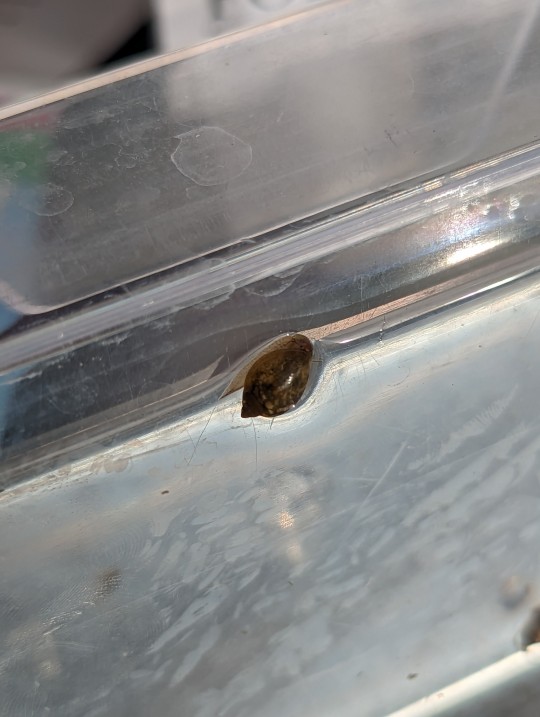
a cross orb-weaver, shes quite plump

also, some random bug memes that i thought were funny
WEEVIL TIME. Very small, very cute. Also in love with the snail but I'm OBSESSED with the cross orbweaver. Look at her little face?? Precious.
P.S. - The memes made me laugh but I removed them because I'd rather not set a precedent and get flooded with random meme submissions. Always happy to be tagged in them, though!
#animals#insects#bugs#spider#arachnids#submission#gastropods#aquatic#snail#bladder snail#beetle#weevil#cross orbweaver
105 notes
·
View notes
Text

*wet coughing noises*
#dead space#cyrsed art#just wanted to doodle something simple & i love ds1 slashers sm#i really like what the remake did w the animations and posing n eyes n stuff#but i do wish they leaned a tiny bit more into the insect/aquatic influences and a lil less into zombie
97 notes
·
View notes
Text
Wet Beast Wednesday: aquatic insect larvae
This Wet Beast Wednesday is going to be different than usual. Instead of an in-depth overview of a specific species or group of species, I'm going to give a general overview of aquatic insect larvae as a whole and then showcase some groups of insects. I'm going to focus on insects that have an aquatic larval stage and terrestrial adult stage, saving adult aquatic insects for another post.
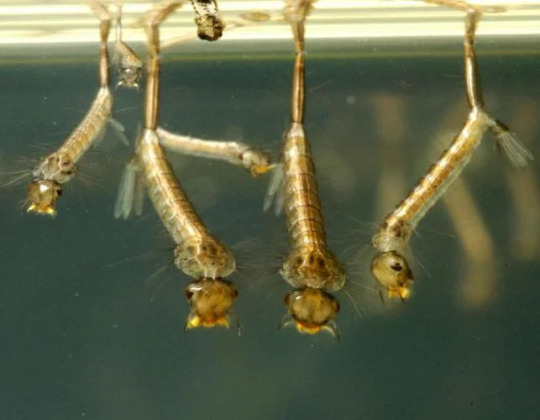
(Image ID: a group of mosquito larvae. They are yellowish bugs with long, slender bodies, no visible limbs, small heads, and feathery appendages from their rear ends. From the back of the abdomen, a snorkel-like appeadage attaches to the surface of the water, using surface tension to allow the larvae to hang from the surface. End ID)
Insects are basically the most successful group of animals in the history of life on Earth and have adapted to live in just about every terrestrial habitat. It should not be much of a surprise than that they have also moved into the water. More specifically, fresh water as almost all aquatic insects inhabit fresh or maybe brackish water. Only the water strider genus Halobates are truly marine. Some species of insect are aquatic for their entire lives, some are primarily terrestrial but able to swim, and some are aquatic only for their larval stage of life. These aquatic larvae species are generally agreed to have evolved from fully terrestrial ancestors. The adaptation of partially returning to the water has evolved independently many times in many different clades of insect and so different species use different strategies and adaptations. It is possible that aquatic larvae evolved in response to high competition for resources on land. If multiple species are competing over the same resources during their larval stages but one of those species manages to adapt to a whole new environment, that species will now have abundant access to resources the other species are unable to get to. Because of the very different lifestyles required for aquatic and terrestrial animals, aquatic larvae often look very different than their adult forms.
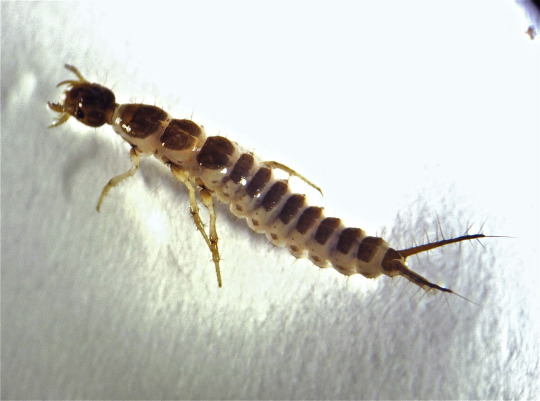
(Image: an aquatic beetle larva. It looks nothing like an adult beetle, instead being a long, slender insect with no wings, multiple body segments, and two hairy appendages at the base of the abdomen. End ID)
Aquatic larvae serve important roles in their ecosystems. Many are herbivores or detritivores that consume algae and bits of biological material, helping recycle nutrients and clean the water. Some are predators that hunt smaller invertebrates or plankton. Importantly, aquatic insect larvae provide a major food source for larger fish, invertebrates, birds, and so on. Some species can be considered keystone species, vital to their ecosystems. Many species are highly sensitive to changes in their environment, allowing them to act as indicator species for the health of their ecosystems. The trio of mayflies, stoneflies, and caddisflies are very commonly used as indicators of pollution as all three are highly sensitive to pollutants. A stream with few mayflies, stoneflies, or caddisflies but plenty of less sensitive species is likely to be polluted.
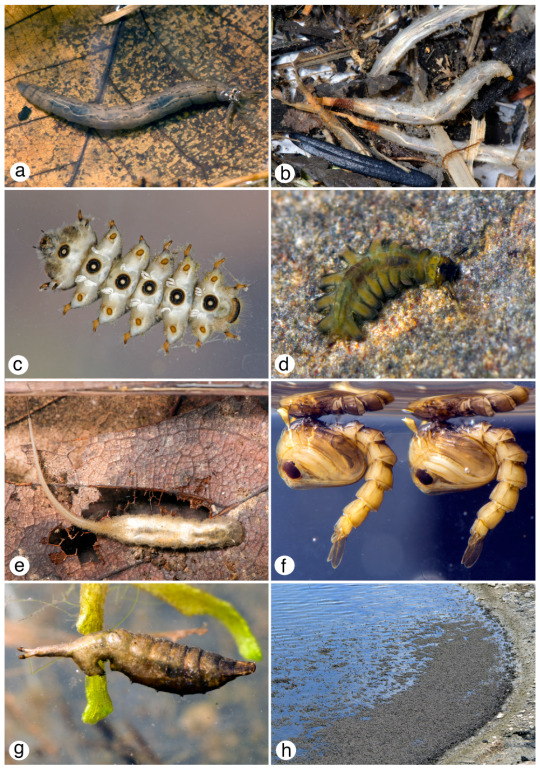
(Image ID: a collage of aquatic larvae of multiple species in the order Diptera (true flies. They vary from slug-like to having multiple distinct body segments with legs, to looking like maggots with long tails. End ID. Source)
Mayflies (order Ephemeroptera) are among the oldest lineages of winged insects, bearing traits that they first flying insect also had. Juvenile mayflies are technically not larvae, but nymphs. The difference between a larva and a nymph is that nymphs look much more like the adult stage than larvae do. Mayfly nymphs lack the wings of adults, but have external gills growing from the sides of their abdomens. Mayfly nymphs can be identified by three appendages called cerci that emerge from the back of the abdomen. They are bottom-dwellers that typically live under rocks and other objects or amid plants. Most are herbivores, feeding mainly on algae. Months to years after hatching (species dependent), mayflies will float to the surface and go through a molt to a stage called the subimago. Uniquely among insects, mayflies go through two final winged molts. The first is to a not sexually mature stage called the subimago, then they quickly molt again into a fully mature imago stage. These molts happen in sync, resulting in hundreds to thousands of mayflies appearing all at once and swarming together to mate. Famously, adult mayflies exist only to mate and die. Their digestive systems are non-functional and few species last past a few days.

(Image: a mayfly nymph on a rock. It is a yellow bug with no wings, a long abdomen, and thick, grasping legs. Three long, hairy cerci emerge from the back. Along the side of the abdomen are multiple pairs of white, feathery gills. End ID)
Stoneflies (order Plecoptera) also have nymphs and can be quite difficult to tell apart from mayfly nymphs if you don't know what to look for. One of the biggest differences is that their gills are located by the base of the legs rather than along the abdomen. Like mayflies, stoneflies are some of the most primitive winged insects, but mayflies are Paleopterans (the earliest wings insects) while stoneflies and most other winged insects are Neopterans. The main difference is that Neopterans can flex their wings over their abdomens while Paleopterans cannot, and must hold their wings either out to the side or up in the air. Like with Mayflies, many adult stoneflies have nonfunctional digestive systems and exist only to mate and die.

(Image: a stonefly larva. It looks similar to a mayfly larva, but has a shorter abdomen, gills along the base of the legs, and only two cerci. End ID)
Caddisflies (order tricoptera) are the builders of the aquatic insect world. These larvae (most species anyway) can produce silk from glands near their mouths. These are used to make a variety of structures made from silk and various other materials including sand, silt, plant parts, shells, rock, and so on. Different species will seek out specific materials for their structures. There are a few types of structures, the most common of which is a tubular case that is open at both ends. The larva can carry the case with it as it crawls around and can retreat into the case for protection. The larva can draw water into one end of the case and out the other, allowing oxygenated water to flow over the gills. By moving around in the case, the larva can draw in more water. This allows the larvae to survive in water that is too oxygen-poor for other larvae. Other species build different structures including turtle-shell like domes or stationary retreats. My favorite structures are nets built with an open end into current. The current naturally brings detritus and micro-invertebrates into the net, where the larva can eat them. Caddisflies also pupate into pupa that have mandibles to cut their way out of their cases and swimming legs. Once developed, the pupae swim to the surface and molt into their adult forms. This molting is synchronized to ensure the adults emerge in swarms and can easily find mates.
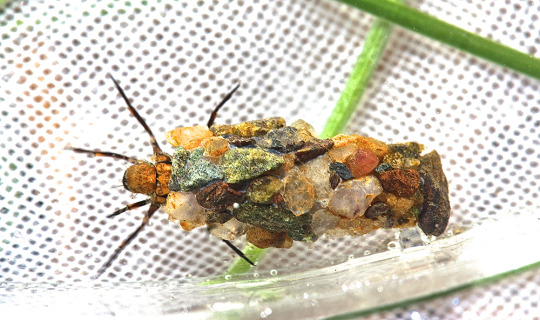
(Image ID: a caddisfly larva in its case. The case is a tube composed of pebbles of different colors stuck together with silk. The head and legs of the larva are merging from the front of the case. End ID)
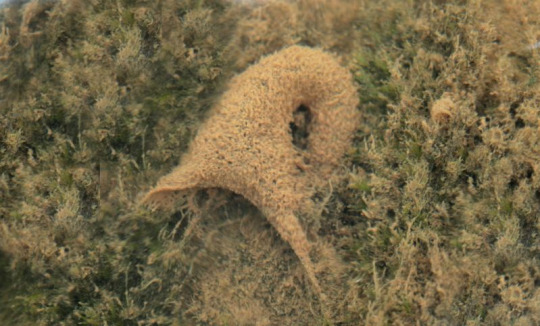
(Image: a caddisfly net. It is a structure made of silk shaped like a tube that is wide at one end and tapers toward the other. It is curved so both ends face the same way. End ID)
The order Megaloptera consists of alderflies, dobsonflies, and fishflies. All three have aquatic larvae, but their eggs are laid on land. Most species lad their eggs on plants overhanging the water so the larvae fall in once hatched, though a few lay eggs near the water's edge, forcing the larvae to crawl in. Meglaoptera have the least amount of differences between larva and adult of all holometabolous (pupa-forming) insects. The largest differences between the larvae and adults is the larvae lack wings and some species have leg-like prolegs. All species are carnivorous as larvae and feed on other invertebrates.
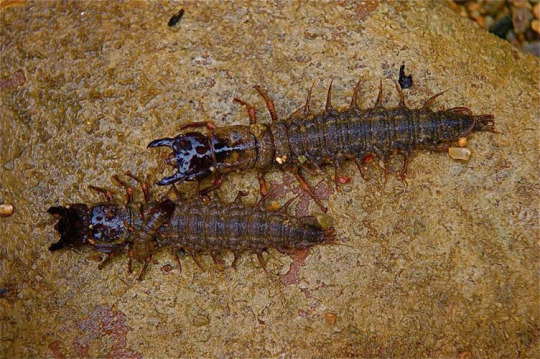
The adults don't look any less creepy
(Image: two hellgrammites, the larval form of a dobsonfly. It looks somewhat like a centipede with three pairs of limbs and a long abdomen with multiple pairs of leg-like prolegs. The head has no visible antennae, but does have a pair of powerful pincers. End ID)
Order Odonata consists of dragonflies and damselflies. These are powerful predators both as nymphs and adults. As nymphs, the juveniles are shorter and stockier than the adults, with no wings. The nymphs (or naiads) breathe through gills. In damselflies, these gills can be external, but dragonfly nymphs have their gills located in the anus. Damselflies can swim by undulating their gills, but dragonfly nymphs are restricted to crawling. The nymphs are voracious predators that will feed on anything they can catch. Most of their diet consists of invertebrates, but they will also attack small fish, tadpoles, and even salamanders.
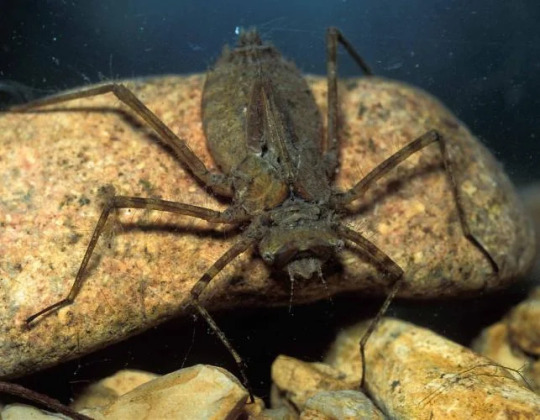
(Image ID: a dragonfly larva on a rock. Its head is similar to that of the adults, but the abdomen is much shorter and broader and the legs are longer. It has no wings and is brown all over. End ID)
The groups of insects I covered today (plus the stoneflies) all have exclusively or near-exclusively have aquatic larvae while the adults are terrestrial. In other groups, aquatic larvae may be present in some species while others have terrestrial larvae. For example, a great many members of the order Diptera (true flies) have aquatic larvae including all mosquitos, while other members of the order have fully terrestrial larvae. In addition there are species of beetle (order Coleoptera), moth (order Lepidoptera), lacewing (order Neuroptera), and scorpionflies (order Mecoptera) that have aquatic larvae and some species of the true bugs (order Hemiptera) have aquatic larvae and aquatic adults, including water skaters, water scorpions, and giant water bugs. Aquatic insects are so prevalent that it is rare to find any lasting body of water that doesn't host some aquatic larvae or adults. Even incredibly stagnant and filthy water can host aquatic insect larvae, as shown by the notorious rat-tailed maggots, who love stagnant water and breathe through snorkels. Many species require very specific conditions and there are species of insect who exclusively grow their larvae in specific streams or lakes. Because of this, conservation of these bodies of water is vital to their survival and pollution, damming, and other factors can destroy whole species.
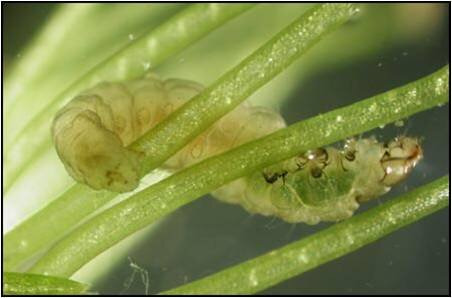
(Image: an aquatic moth larva. It looks very similar to a green land caterpillar, with none of the fancy elements many land species have. It is translucent and wrapped around some aquatic plant stems. End ID)
#wet beast wednesday#insects#insect larvae#aquatic insect larvae#larva#pupa#mayfly#stonefly#caddisfly#dobsonfly#hellgrammite#dragonfly#damselfly#freshwater ecology#ecology#biology#zoology#invertebrate#invertebrates#animal facts#informative#bug#bugs
36 notes
·
View notes
Text

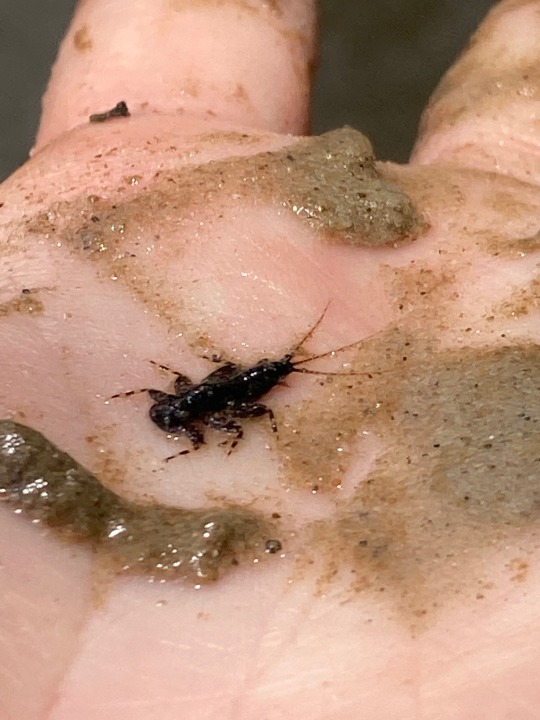
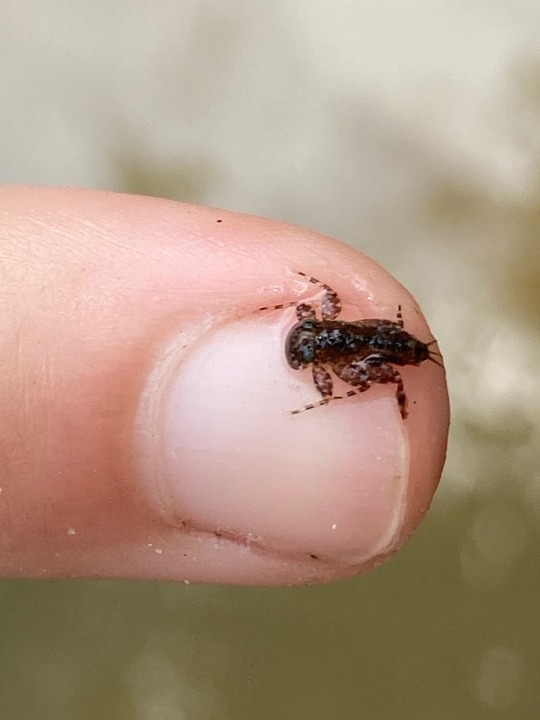
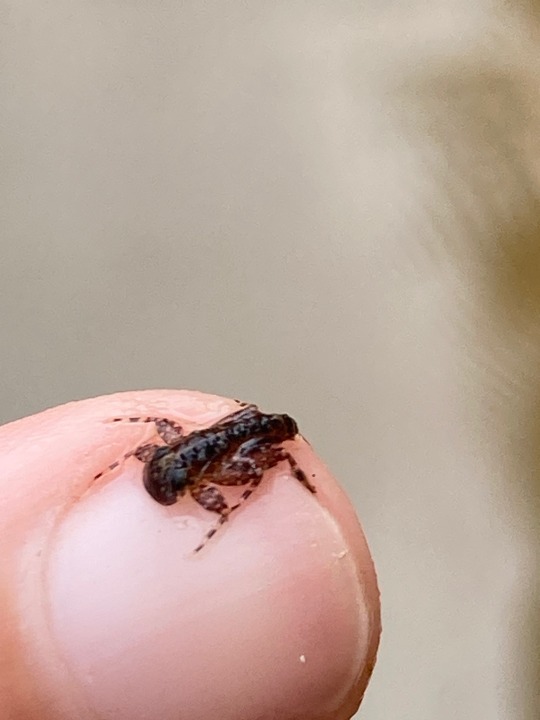

I caught too many of these babies to really count this Sunday, but my god, flat head mayflies never cease to be one of my favorite aquatic insects. Heptageniidae is an ephemeropteran I can always get behind. Caught in a sandy/silty/heavy clay river on various woody debris. Pick up your local wet logs and stare at em! You might find some!
5/5/24
34 notes
·
View notes
Text
Fish are friends! 🐟🐠🐡
New sticker design alert! Along with my respect the insects sticker design, I’ll be debuting this new fish sticker on April 20th




#art#drawing#artists on tumblr#illustration#fish#fishblr#fish are friends#fish art#fish drawing#marine#marine life#aquatic#aquatic animals#insects#but#bugs#ladybug#botanical art#botanical
13 notes
·
View notes
Text

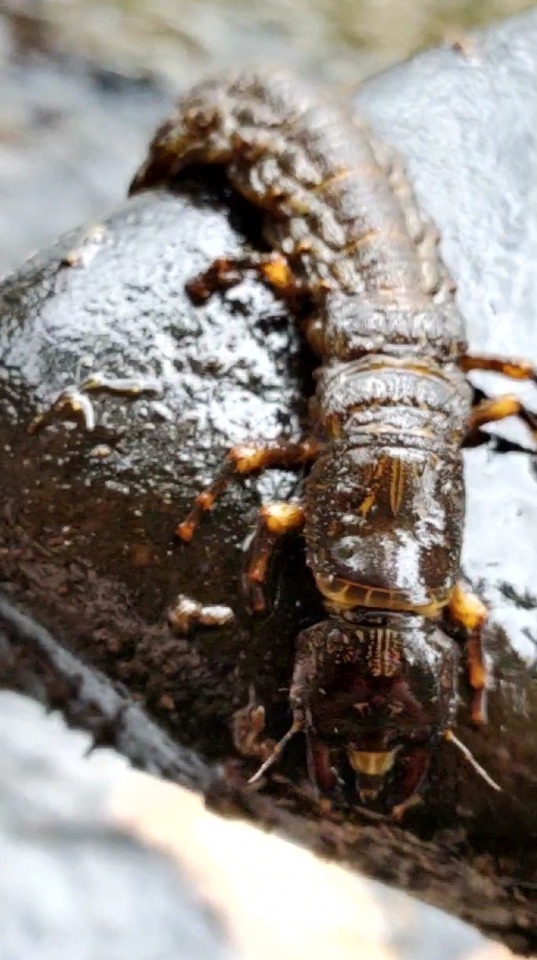
Eastern dobsonfly (Corydalus cornutus) larva I found while hanging out in the river in Northeastern Pennsylvania (US) last year.
Dobsonfly larvae, also known as hellgrammites, are one of the top invertebrate predators in fast-moving streams. They tend to hide under rocks and use their sharp mandibles to capture and eat prey. These mandibles can also deliver a painful (but harmless) bite, so definitely be careful handling them!
Larvae can get up to 3.5 inches (9 cm) long. Since they're large and relatively common, many of the local fishermen like to use them as bait (which may or may not be problematic).
These insects spend 1-3 years as larvae and pupate outside of the stream under a rock or log. The adults are huge. The male can be up to 5.5 inches (14 cm) long and has massive mandibles that are intimidating but harmless. Adults aren't known to feed, and they only live for about a week, just enough time to mate and lay eggs.
#dobsonfly#dobsonfly larva#hellgrammite#bug#Corydalus cornutus#Corydalidae#Megaloptera#eastern dobsonfly#nature#bugs#biodiversity#animals#inaturalist#arthropods#bugblr#entomology#insect appreciation#creature#invertebrates#aquatic life#pennsylvania#river#predator#nature appreciation#cool facts#biology#science#interesting
18 notes
·
View notes
Photo

Common Water Stick Insect (Ranatra linearis)
Family: Water Scorpion Family (Nepidae)
IUCN Conservation Status: Unassessed
Although its name and elongated, stick-like body may suggest otherwise, the Common Water Stick Insect is not closely related to true stick insects, instead being a highly specialized species of water scorpion (a family of aquatic, carnivorous insects characterised by their hooked front legs which, like the legs of a mantis, are modified to be used for grasping prey.) Although its stick-like body has developed independently of the true stick insects found on land, it is used for a similar purpose - like most stick insects, Common Water Stick Insects spend much of their lives perched motionless on branches or other forms of submerged vegetation, making them difficult to distinguish from the plants around them. Remaining in this position conceals them both from potential predators and from their prey, and when a suitably sized animal (usually a large aquatic insect, tadpole or small fish) gets close enough they use their powerful hook forelimbs to quickly grasp and restrain it before inserting their sharp-tipped, tube-like mouths and draining the prey of nutritious internal fluids such as blood or haemolymph (the equivalent of blood in arthropods.) Found in well vegetated ponds, lakes and (on rare occasions) lagoons across much of Europe and North America, Common Water Stick Insects move between perches by swimming, but are unable to extract oxygen from water and must instead keep the long, tail-like protrusion at the tip of their abdomen, which essentially serves as a rear-mounted organic snorkel, above the surface when perching in order to breathe. Members of this species breed in the mid spring (with females depositing a large number of tiny eggs in neat rows on aquatic vegetation shortly afterwards,) and their larvae, which are carnivorous from birth, reach full maturity when around 2 months old. Though they rarely leave the water if left to their own devices, a lack of prey may lead to large numbers of Common Water Stick Insects surfacing and taking flight in search of new hunting grounds.
--------------------------------------------------------------------------
Image Source: https://www.inaturalist.org/taxa/362340-Ranatra-linearis
#Common Water Stick Insect#Water stick insect#insect#insects#zoology#biology#entomology#arthropods#arthropod#north american wildlife#european wildlife#aquatic wildlife#pond wildlife#bug#bugs
51 notes
·
View notes
Text


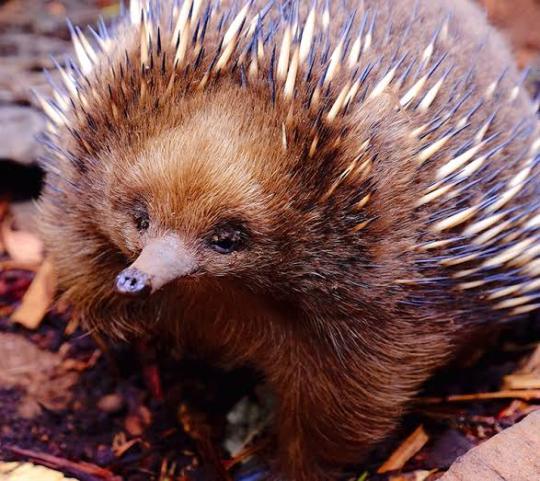
hey did you know that i like echidnas
#like. even outside of knuckles being one#they are so swell#they're so WEIRD and so INTERESTING#they lay eggs and they sweat milk and they have electroereceptors#i believe they're the only non-insect and non-aquatic animal to have electroreceptors???#they're so cool man#and they're SO DAMN CUTE AGHH#echidnas
42 notes
·
View notes
Text
This is a long shot but if someone can save me a few hours worth of research I'd be super grateful
I am a field technician doing stream monitoring and my local county department is developing a more detailed assessment method using family-level pollution tolerances rather than the more commonly used method of sorting specimens into either Philopotamidae vs. Hydropsychidae. Through my research I've found that tolerance varies between members of the same family, and it is useful to also be aware of genus-level tolerances. Unfortunately, I haven't been able to find a good reference for many genera (except for macroinvertebrates.org, love that site) I also don't have access to paywalled research papers and have been stuck with looking through old government reports and open-source journals. Is anyone willing to share a good paper/report/website with me that includes any information available for Trichoptera (and any other macroinvertebrate order) genera-level tolerance values?
(I tried posting on reddit but all the relevant invert forums are dead)
#wrenfea.exe#invertebrates#macroinvertebrates#trichoptera#caddisfly#biomonitoring#stream science#stream ecology#freshwater ecology#bugs#insects#larvae#larva#fishing#btw if anyone is interested in aquatic insects please look at macroinvertebrates.org its amazing#biology#marine science
11 notes
·
View notes
Text
Check out this little dude. This is a whirligig beetle!
They get their name (i think) from the way they love to rapidly swim around in circles. They're a common sight on the shores of any freshwater pond or lake in the Summer.
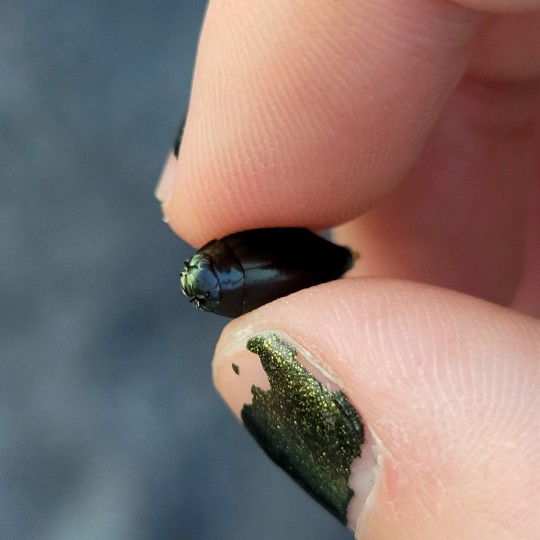
Their sleek, streamlined design serves a similar purpose as in diving beetles - to make them hydrodynamic (faster in the water). And they are quite fast swimmers! You'd be hard pressed to catch one without a net.
Here's a couple of them swimming! Look at that stroke! Little Olympic contenders! They even have a little "paddle" on their rear that helps them push through the water!
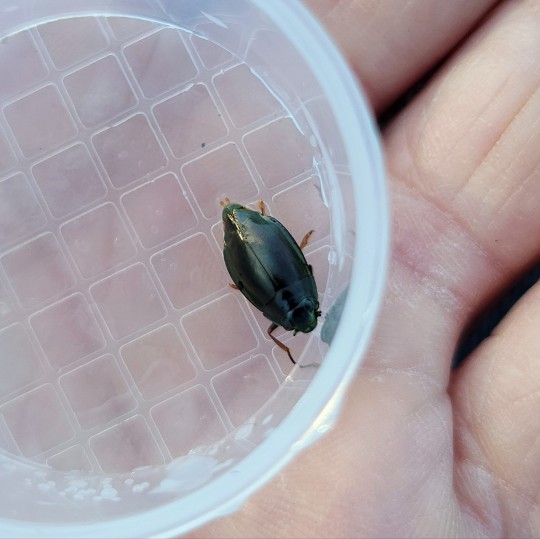

Their speed is mostly for evading predators. Their food sources aren't very fast - consisting mostly of water mites, snails, and small insect larvae. These guys, like dragonfly nymphs, help cut down on mosquito larvae, making them very beneficial!
But above all, I think the coolest thing about whirligig beetles is this:

Look closely - these beetles have FOUR EYES. Now, having more than 2 eyes is actually pretty common in the insect world. Many have 3 or more eyes. However, these "extra" eyes are usually small ocelli, or "simple eyes" that can't do much besides sensing the relative light level throughout the day.
Whirligig beetles have 4, real-deal, massive compound eyes that give them excellent vision. But why 4? It has to do with the fact that whirligigs swim on the exact surface of the water! Two of their eyes look above for predators, while the two on the bottom search for prey (and for other predators)!
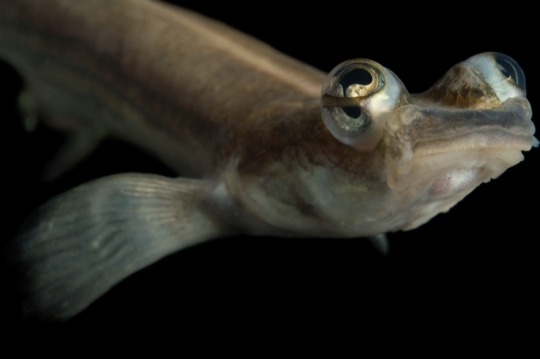
(image source: National Geographic)
This amazing adaptation is similar to the four-eyed fish. It only has 2 eyes, but each one has two pupils, giving it the same ability as the whirligig beetle!
Next time you're near a freshwater shore, look for these cool little swimmers. The beetles themselves might be a little tough to spot, but the swirling of water and subsequent ripples they make will make it obvious when they're around.
Hope you enjoyed these tid-bits about these bugs! It goes to show that even common insects can have mesmerizingly cool traits of their own!
#bug#bugs#nature#insect#insects#entomology#forest#entymology#invertebrates#photography#beetle#beetles#aquatic#freshwater#whirligig#pond#ecosystem
251 notes
·
View notes